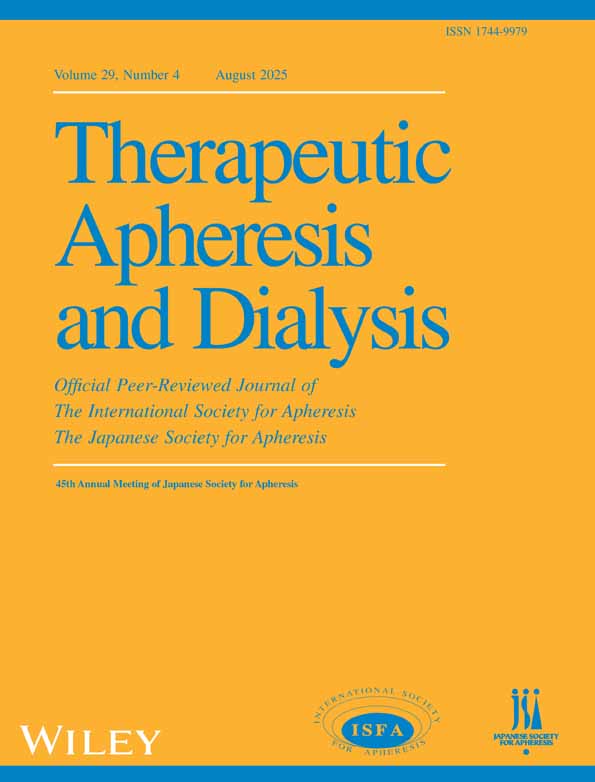Effects of Operating Conditions on Selectivity of a Plasma Fractionator in Double Filtration Plasmapheresis
Abstract
Abstract: In a typical double filtration plasmapheresis treatment, plasma fractionation between albumin and some immunoglobulins associated with toxins is limited because none of the currently available plasma fractionators has a strict cutoff property for these proteins. Selectivity of immunoglobulins over albumin depends not only on the cutoff properties of the membrane but on the operating conditions such as the flow rate of the supplied plasma (Qp) and retained plasma to be discarded (Qd) in the plasma fractionator. We carried out an in vitro study using human plasma harvested by single plasma exchange treatments to assess the selectivity of a plasma fractionator, Evaflux 2A-F (Kawasumi Laboratories, Inc., Tokyo, Japan), under various operating conditions. The results of rate-constant filtration experiments showed that the concentrations in the feed tank and the sieving coefficient (SC) values of every protein were decreased slightly within 2 h after the start of the experiment because of membrane trapping, adsorption, and/or plugging. The time-averaged SC value of albumin increased with flow rate ratio (Qp/Qd) due to increasing filtration fraction (FF), but relative removal efficiency (mD/mP*) for albumin decreased with Qp/Qd due to decreasing Qd. For immunoglobulins, on the other hand, the SC values were almost unchanged, and the mD/mP* values increased with Qp/Qd due to an increase in FF. Both increasing Qp and decreasing Qd are effective means of improving selectivity between these proteins in the plasma fractionator. Membrane fouling is, however, obvious beyond a Qp/Qd value that is thought to be a critical point. Operation should be conducted below the critical Qp/Qd value, which depends on the patient's plasma components and the cutoff property of the membrane.




